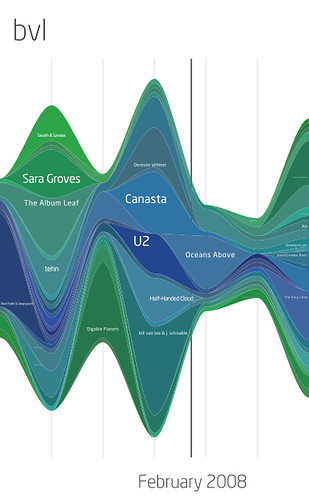Cutting Edge College Technology Majors
When it comes to future careers, the reality is that most of us cannot even fathom what some of the more sophisticated job options will be. But if you want to put yourself on the cutting edge of technology and in a position to step into one of those careers that has yet not even been created, you may want to consider one of the following study options.
Microtechnology and Nanotechnology
When it comes to technology, the bottom line is that everything is getting smaller. From the miniature electronic accelerometers that trigger airbag deployments in autos to the incredible versatility built into today’s smartphones, technology is growing ever smaller even as it grows more sophisticated.
Perhaps no field holds greater promise for the future than the field of microtechnology. It is a career option that is so cutting edge that academic programming and degree options are just now being created.
Microtechnology is a concept that takes massive amounts of information and/or mechanical processes and then condenses them into a microchip for use in computers, mobile phones, medical devices, automobile computer systems, and security products. Items are made utilizing integrated circuit processing techniques and range in size from one-millionth (micro) to one-one thousandth (milli) of a meter.
 Moving even smaller is a separate field called nanotechnology. The prefix “nano” originates from a Greek word meaning one billionth of a specified unit. Therefore, nanotechnology is a subsection of microtechnology involving the study of objects that are 1,000 times smaller.
Moving even smaller is a separate field called nanotechnology. The prefix “nano” originates from a Greek word meaning one billionth of a specified unit. Therefore, nanotechnology is a subsection of microtechnology involving the study of objects that are 1,000 times smaller.
The construction of new nanotube-based components could ultimately revolutionize aeronautics. Carbon nanotubes (pictured right) are lighter than steel but 100 times stronger. Such materials will allow airplanes and spacecraft to fly higher while using less fuel and have led researchers to imagine a future with spy planes the size of insects.
People who work in the field are often called microtechnicians and of course span a broad range of industries. Potential career options range from medicine to defense systems and will likely involve every technical career in between. Ultimately, scientists believe this new technology will surpass the scope of the computer revolution, potentially affecting everything from the construction of batteries to the treatment of cancer.
The National Science Foundation estimates the U.S. will need 800,000 to 1 million nanotechnology workers over the next ten years. Because of those potential future demands, the foundation has established nanotechnology centers at six different universities, each conducting research in potential cutting-edge applications.
For some additional information on this cutting edge option, head on over to the Oklahoma State University web site.
Visual Representation of Complex Data
 The explosion in technology has made information gathering and collection much easier for researchers. In addition, scientific research is growing in complexity. The result can be a disconnect between the results of in-depth research and the ability of non-researchers to make sense of the data that has been created.
The explosion in technology has made information gathering and collection much easier for researchers. In addition, scientific research is growing in complexity. The result can be a disconnect between the results of in-depth research and the ability of non-researchers to make sense of the data that has been created.
Therefore, representing complex data for readers, whether it be citizens trying to make sense of information online or other researchers not versed in sophisticated mathematical operations, is a growing challenge. In simplest terms, the idea is to be able to accurately reflect numbers and facts in visual form to help the public and/or decision-makers interpret the data being presented.
Today, there are now courses and a field of study that examine visual representation methods and techniques all with an eye towards increasing the understanding of complex data. The field focuses in on how we humans process information visually and therefore looks at the best design practices for visualization. This unique career option crosses over into the world of computer programming languages yet offers some of the creative flair of the graphic arts field.
The field has even spawned an interactive visualization application program called Processing. The concept is putting an end to the over-reliance on traditional graphs and charts.
At Harvard, one course in data visualization has most elements available online for students interested in learning more about this career option.
Human-Computer Interaction
Yet another amazing cutting edge career option involves the push towards meshing technological capabilities with their human counterpart. An entire institute has been formed at Carnegie Mellon that has as its mission, “To understand and create technology that harmonizes with and improves human capabilities, goals, and social environments.”
 Looking to study the effects of computer science on society, these programs feature interdisciplinary research and education in computer design and the fields of behavioral and social science. In simplest terms, the field looks at the full cycle of our new exploding, information-rich society, and examines the effect of technology on how we adults work, play and communicate.
Looking to study the effects of computer science on society, these programs feature interdisciplinary research and education in computer design and the fields of behavioral and social science. In simplest terms, the field looks at the full cycle of our new exploding, information-rich society, and examines the effect of technology on how we adults work, play and communicate.
For those concerned that our technological advances are not leading to improved lives for individuals and groups, the field of human-computer interaction may just be the place to work. Ensuring that our technology does in fact improve the lives of citizens is as critical as the theoretical creation of new technologies.
For more on this incredibly important field, head on over to the Carnegie Mellon web site.
Flickr photos courtesy of St Stev, chromedecay and ario j.

